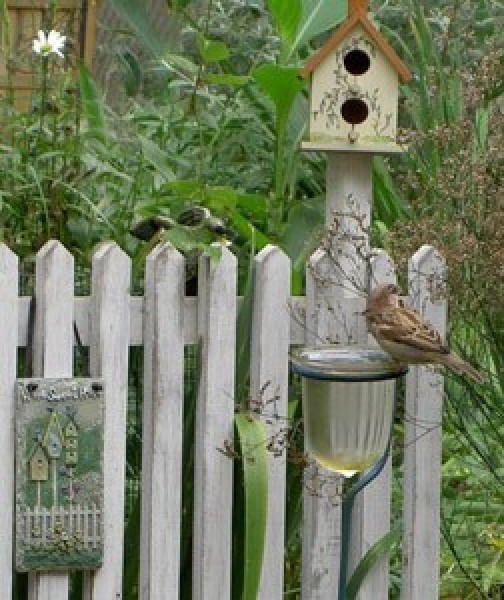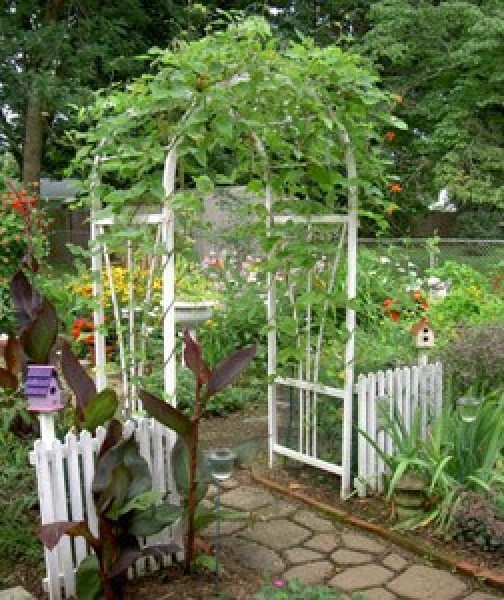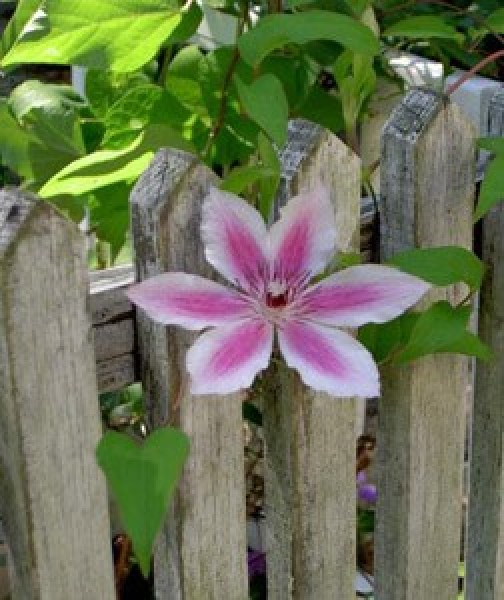Someone's trash is another woman's treasure! I found these freezer floor grates at a local salvage yard for $5.00. They were just the right height (about 2 feet) for keeping the bunnies from their breakfast! (My vines!)

They also camouflaged the chicken wire that protected the vines, and at the same time dressed up my garden doorway. The picture of the clematis poking through shows the fence after 5 years.


I would guess that freezer floor grates are hard to come by, but with imagination and creativity you might envision a fence in an old wooden ladder or railing. If all else fails, buy the wood and build your fence from scratch. If you do decide to buy the wood, I would recommend the treated lumber. My fences lasted only about 6 years, but the posts that I used were treated lumber and they withstood the elements.
Approximate Time: 3 hours

*Just a note: This sounds harder than it is. If you lay your pieces out and just position them to the way you want, you'll see what you have to do. Measurements are approximate, as your fence size will differ from mine. Have fun!
By Deb H. from East Brunswick, NJ
Add your voice! Click below to comment. ThriftyFun is powered by your wisdom!
It makes your garden so inviting. I actually never heard of these freezer crates, we have lots of wooden pallets that are easy to come by for free they may work for your idea as well. Those you used looks very sturdy and I bet could be used to make smaller kids or one person porch swings.
Don't use the treated wood for vegetable gardens. It could poison you. it is treated to prevent insects from gnawing at the wood.
Add your voice! Click below to comment. ThriftyFun is powered by your wisdom!